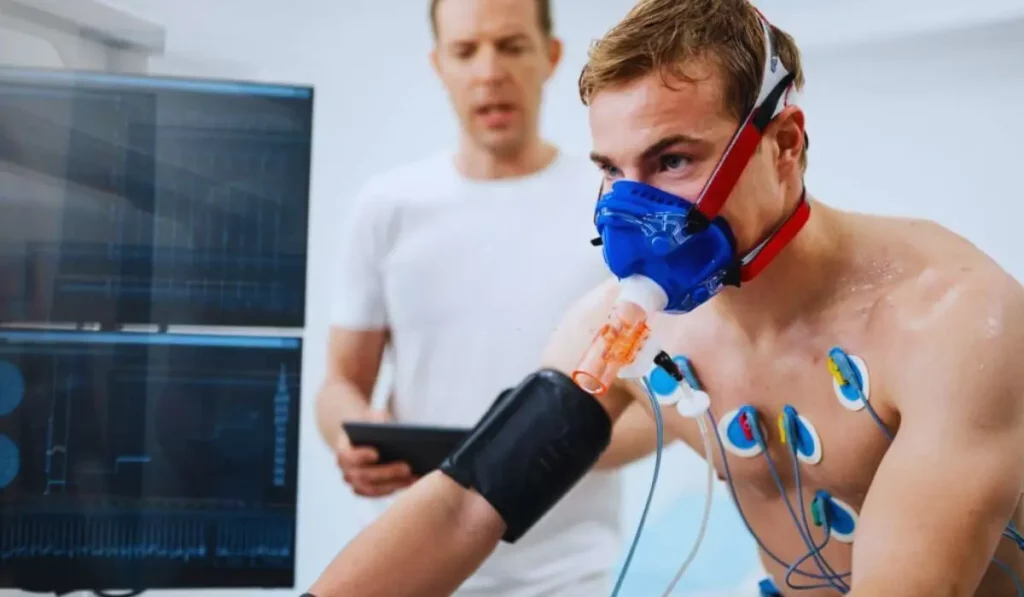In sports, there is always a pursuit of excellence. Athletes are constantly pushing the boundaries of their physical limits. Sports medicine has always been essential in helping athletes reach their maximum potential and recover from injuries.
Now, the integration of genomics into sports medicine is transforming the field by providing tailored insights and specific requirements of each athlete. Therefore, this article delves into how genetic discoveries are changing athlete’s preparation, recuperations, and competitions.
Understanding Sports Genomics
Applying genetic concepts to athletic performance is the field of sports genomics, which is relatively young. It examines an athlete’s genetic makeup to find certain genetic variations or markers linked to athletic ability, vulnerability to injury, and other performance-related variables. Scientists and sports professionals can learn a great deal about an athlete’s athletic ability by analysing their DNA.

Uncovering Athlete Potential
Finding a person’s genetic potential is one of sports genomics’ main objectives. Researchers can find genetic variants linked to characteristics like muscle fibre compositions, aerobic ability, and muscle repair by looking at an athlete’s makeup. Athletes and coaches can use this information as a helpful road map to customize their conditioning and training programs in order to maximize the athlete’s potential.
For example, sports genomics often studies the ACTN3 gene. Fast-twitch muscle fibres, which are essential for quick, high-intensity exercises like powerlifting and sprinting, are linked to this gene. Knowing that they may have a genetic edge in these activities can help athletes who carry a particular genetic version of ACTN3.
Tailoring Training Programs

Sports genome research has the power to completely change how players prepare. Personalised training programmes can be created by coaches using genetic information rather than a one-size-fits-all strategy. An athlete who is genetically predisposed to increase aerobic capacity, for example, may concentrate on enduring training, whereas an athlete who is predisposed to power would focus on strength and speed.
The tailored strategy reduces the chance of overtraining and injuries while simultaneously optimising performance. Athletes are more likely to achieve their optimum performance levels without straining their bodies past their breaking point when they precise in accordance with their inherited strengths.
Also, Read: Muscle Spasms In Legs – Immediate Relief Options Explored!
Injury Prevention And Recovery
An athelete’s worst nightmare is getting hurt. Sports genomics can be extremely useful in determining genetic markers linked to an increased risk of injury. Trainers and medical specialists can lower the chance of injuries by implementing preventive measures, such as particular exercise or nutritional strategies, by recognising an athlete’s genetic predispositions.
Furthermore, genetics might provide insight into a person’s capacity for injury recovery. Certain people have genetic variations that promote rapid tissue regeneration and healing. With this knowledge, healthcare providers can tailor rehabilitation plans to accelerate an athlete’s recuperation and return them to accelerate an athlete’s recuperation and return them to competition sooner.
Nutritional Insights
Athletic performance is largely dependent on nutrition, and genetics can provide important information about an athlete’s dietary requirements. Sports genomics can assist athletes in fine-tuning their diet’s peak performance by examining genetic markers linked to metabolism, nutrient absorption, and food sensitivities.
For instance, lactose-free dairy substitutes might be advantageous for a sportsperson who has a genetic tendency towards a decreased lactose tolerance. A person who has an increased requirement for specific vitamins or minerals might modify them to make sure they are obtaining the nutrients their body needs.
Ethical And Privacy Concerns
Sports genomics presents significant ethical and privacy issues in addition to its obvious potential benefits. Genetic data on athletes needs to be managed carefully. Concerns exist around the possible uses of this data as well as who may access it. Could genetic data, for instance, be used to unfairly favor some people over others or discriminate against competitors in sporting events?
Furthermore, it is controversial to utilize genetic data to choose athletes at a young age, thus undervaluing the value of perseverance and hard effort. The sporting world must manage the difficult task of striking a balance between preserving the fundamental principles of sports and using genomics to improve performance.
Conclusion
Sports and physical activity-related injuries are the main focus of sports medicine, which also includes their prevention, diagnosis and treatment. It includes several different medical specialties such as sports, psychology, physiotherapy, nutrition and orthopedics. However, genomics is now providing a greater understanding of an athlete’s genetic information, which can be used in all aspects of the athlete’s life.

